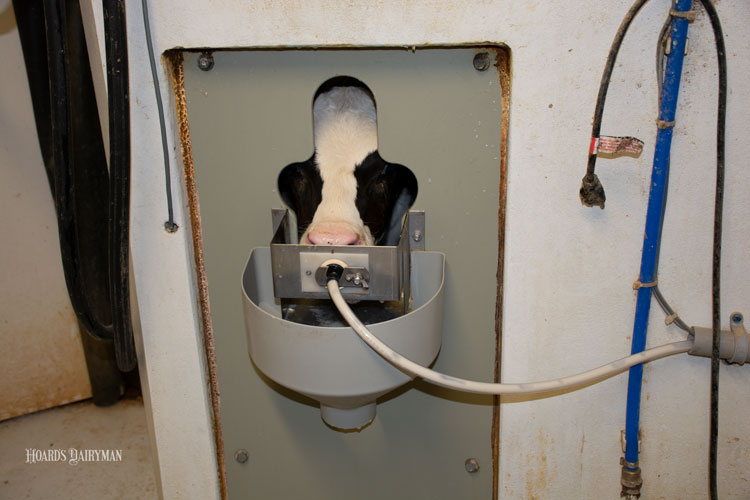
The number of calf barns with automated feeders is certainly on the rise. More and more farmers are going that route for their calf raising needs.
Reduced labor and the ability to feed more milk are two common reasons why farms choose automated feeding. But what do those benefits do to calf raising costs?
University of Wisconsin-Extension agriculture agents set out to determine current calf raising costs in both individually fed and group fed calves. They collected data from 24 farms in Wisconsin and two in Minnesota.
Feed costs: As one might expect, calves on automated feeders drank more milk. In the study, individually fed calves consumed 80 pounds of milk replacer (range was 42 to 98 pounds) or 855 pounds of whole milk (range was 548 to 1,142 pounds). The automated feeder calves consumed 134 pounds of milk replacer (range was 50 to 212 pounds) or 921 pounds of whole milk (range was 725 to 1,490 pounds).
This obviously impacted liquid feed price. The average cost for liquid feed was $111.95 for individually housed calves, compared to $140.50 for the autofeeder calves. On a daily basis, it was $1.60 versus $2.08.
Housing costs: Housing and equipment costs were also more expensive for the autofeeder facilities. This was reported as $1.13 per day, while individual housing came in at half that much – 58 cents.
Labor costs: On the flip side, labor costs were lower for the group housed calves. These farms spent about $1.01 per day on paid labor, compared to $1.39 per day for the producers with individually housed calves. Considerable variation did exist within each category, which could be related to the number of calves being cared for and the efficiency of the feeding and cleaning systems.
Total costs: With all costs factored in, individually housed calf raising costs were $5.84 per day or $619.62 per calf (including $200 for the value of the calf). For autofeeder systems, the price was $6.35 per day or $631.34 per calf.
More information can be found in the full report “Economic Costs and Labor Efficiencies Associated with Raising Dairy Calves for Operations Using Individual or Automated Feeding.”








